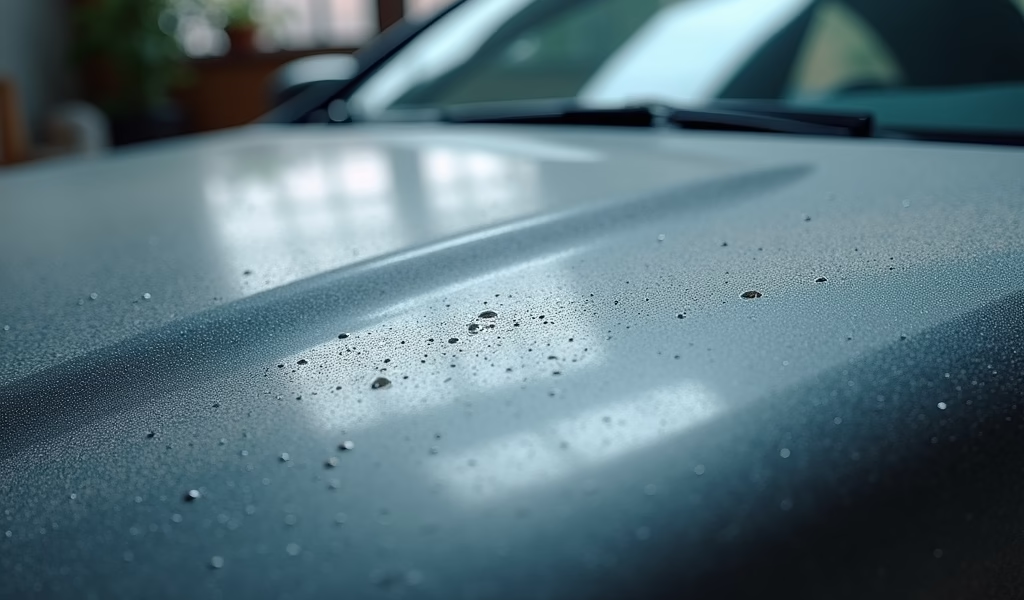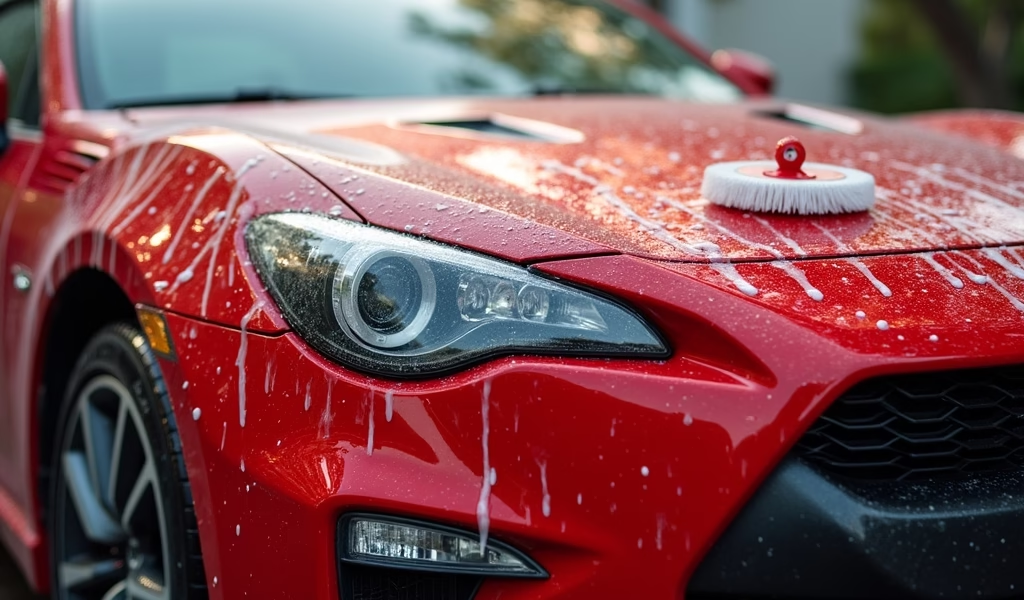Overview
This article explains how to assemble a scratch-free car wash kit with five essential components: microfiber wash mitts, a two-bucket system with grit guards, pH-balanced car shampoo, quality microfiber drying towels, and proper washing techniques. By investing in these specialized tools and following the recommended maintenance practices, car owners can protect their vehicle’s paint from swirl marks and scratches while preserving its appearance and resale value.
Table of Contents
- Why a Quality Car Wash Kit Matters
- Essential Components of a Scratch-Free Car Wash Kit
- Microfiber Wash Mitts: Your First Line of Defense
- Two-Bucket Washing System: The Professional Approach
- pH-Balanced Car Shampoo: Gentle Yet Effective
- Microfiber Drying Towels: The Finishing Touch
- Grit Guards: The Unsung Heroes
- Proper Washing Techniques for Scratch Prevention
- Maintenance of Your Car Wash Tools
- Building Your Own Premium Car Wash Kit
- Conclusion
- Frequently Asked Questions
Why a Quality Car Wash Kit Matters
Investing in a proper car wash kit isn’t just about keeping your vehicle clean—it’s about protecting one of your most significant investments. As someone who’s spent two decades under the hood and polishing paint, I’ve seen firsthand how the right car wash kit can make the difference between a showroom shine and a swirl-marked mess. Those tiny scratches you see under certain lighting? They’re usually the result of improper washing techniques and low-quality tools.
The average automatic car wash uses brushes that, while efficient, can drag dirt particles across your paint like sandpaper. Even well-meaning DIY enthusiasts often unknowingly damage their vehicles with household sponges or towels that trap abrasive particles. That’s why professionals rely on specialized tools designed specifically for automotive finishes.
A quality car wash kit does more than clean—it preserves your vehicle’s appearance, protects its resale value, and provides that satisfaction of seeing water bead perfectly on a well-maintained finish. Let’s look at the essential components that create that scratch-free shine we’re all after.
Essential Components of a Scratch-Free Car Wash Kit
Building the perfect car wash kit requires understanding what each component does and how it contributes to a scratch-free result. From my years in professional detailing, I’ve narrowed down the essentials to five key tools that form the foundation of any serious car washing setup:
- Microfiber wash mitts or cloths
- Two-bucket washing system with grit guards
- pH-balanced car shampoo
- Microfiber drying towels
- Specialized wheel cleaning tools
Each of these components plays a crucial role in the washing process. The wash mitt gently lifts dirt without scratching, the two-bucket system prevents reintroducing contaminants to the paint, pH-balanced shampoo cleans without stripping protection, and proper drying towels prevent water spots and scratches during the final step.
According to Consumer Reports, using the wrong washing tools can create fine scratches that eventually dull your paint’s appearance. This damage accumulates over time, making your vehicle look older than it actually is. Let’s examine each component in detail to understand why they matter.

Microfiber Wash Mitts: Your First Line of Defense
Microfiber wash mitts are the cornerstone of any quality car wash kit, and for good reason. Unlike natural sponges or cotton cloths, premium microfiber consists of thousands of tiny fibers that create pockets to trap dirt particles away from your paint’s surface. I’ve watched many car owners cringe when I show them the microscopic scratches left by the old cotton t-shirts they’ve been using for years.
The best wash mitts come in several varieties, each with specific advantages:
- Chenille microfiber mitts: These feature finger-like projections that hold lots of soap and provide gentle cleaning action
- Microfiber-wrapped foam mitts: Combine the softness of microfiber with the structure of foam for controlled application
- Lamb’s wool mitts: Natural option that’s exceptionally soft and holds tremendous amounts of water and soap
When selecting a wash mitt, look for one with deep, plush fibers and tight stitching. Cheap mitts tend to shed fibers and fall apart quickly. I recommend having at least two wash mitts in your car wash kit—one dedicated to the upper body panels and another specifically for lower areas that tend to collect more grit and road grime.
Remember to rinse your mitt frequently during the washing process. This simple step prevents dirt buildup that could potentially cause scratches as you continue washing. It’s a small habit that makes a significant difference in your final results.
Two-Bucket Washing System: The Professional Approach
The two-bucket method is what separates amateurs from professionals in the car washing world. This system is brilliantly simple yet incredibly effective at preventing scratches. One bucket contains your soap solution, while the second holds clean rinse water. The process works like this: dip your mitt in the soap bucket, wash a section of the car, then rinse the mitt in the clean water bucket before reloading with soap.
This methodical approach prevents you from redepositing dirt onto your vehicle’s surface. Think about it—when you use a single bucket, all that grime you just removed ends up in your wash water, which you then apply back onto the paint. Not ideal, right?
For the best results, use buckets with a capacity of at least 3-5 gallons. Smaller buckets require more frequent water changes, while larger ones give you enough volume to properly rinse your mitt. Many detailers also color-code their buckets—typically blue for wash solution and red for rinse water—to avoid confusion during the washing process.
The two-bucket method pairs perfectly with touchless car wash pre-treatments. These pre-treatments loosen stubborn dirt and road film, allowing your two-bucket system to work even more effectively without requiring aggressive scrubbing.
pH-Balanced Car Shampoo: Gentle Yet Effective
Your choice of car shampoo dramatically affects both cleaning power and paint protection. Household cleaners like dish soap might seem convenient, but they strip away protective waxes and sealants while potentially damaging rubber and plastic components. A proper pH-balanced car shampoo is specifically formulated to clean effectively without harming your vehicle’s surfaces.
Quality car shampoos typically feature a pH level close to neutral (around 7), balancing cleaning power with surface protection. They contain lubricants that help your wash mitt glide across the paint, reducing friction that could cause scratching. Many also include optical brighteners that enhance your paint’s depth and clarity after washing.
When choosing a car shampoo for your kit, consider these factors:
- Concentration level (higher concentrations generally mean better value)
- Lubricity (slicker formulas provide better scratch protection)
- Foaming capability (rich foam helps lift dirt away from the surface)
- Residue-free rinsing (prevents water spotting)
Many professional detailers, myself included, prefer shampoos without added wax or gloss enhancers. These “pure” shampoos clean thoroughly without leaving behind substances that might interfere with subsequent polishing or protection steps. That said, if you’re looking for a one-step process, some excellent wash-and-wax products do exist for casual maintenance washes.
According to Auto Geek, using the correct concentration is critical—too little product won’t provide adequate cleaning or lubrication, while too much can leave residue behind. Following the manufacturer’s dilution ratios ensures optimal performance.

Microfiber Drying Towels: The Finishing Touch
The drying phase is where many well-intentioned car owners undo all their careful washing work. Traditional bath towels, even when they seem soft, have fibers that can scratch your paint. Quality microfiber drying towels, on the other hand, are engineered specifically for automotive finishes.
The best drying towels have a GSM (grams per square meter) rating between 350-1200. Higher GSM indicates a denser, more absorbent towel that can hold more water. Look for split microfiber with “waffle weave” or “twisted loop” patterns that maximize absorbency and minimize the number of passes needed to dry your vehicle.
I recommend having at least two types of drying towels in your car wash kit:
- Large waffle-weave or twisted loop towels for the main body panels
- Smaller, ultra-plush towels for details, mirrors, and tight spaces
The technique matters almost as much as the towel itself. Rather than wiping, try placing the towel on the surface and gently dragging it across the panel. This “patting and dragging” method minimizes friction and prevents swirl marks. For even better results, consider using a drying aid spray that provides additional lubrication during the drying process.
Remember to wash your microfiber towels separately from other laundry, avoid fabric softeners (which clog the fibers), and dry on low heat to maintain their performance and longevity. Properly maintained drying towels can last for years of regular use.
Grit Guards: The Unsung Heroes
Grit guards might not be the most exciting component of your car wash kit, but they’re certainly among the most important for preventing scratches. These simple plastic lattices sit at the bottom of your wash and rinse buckets, creating a barrier that prevents dirt from being reintroduced to your wash mitt.
When you rinse your mitt in the bucket, the dirt falls through the grid and settles at the bottom. The guard prevents water agitation from stirring up those particles again. It’s a brilliantly simple solution to a common problem, and once you’ve used them, you’ll wonder how you ever washed without them.
For maximum effectiveness, place grit guards in both your wash and rinse buckets. Some detailers even use a “grit guard insert” system that features two guards in a single bucket—one at the bottom and another halfway up—creating distinct zones for clean and dirty water.
While basic grit guards work well, some premium versions offer additional features like built-in washboards to help remove dirt from mitts or specialized flow patterns that better direct contaminants away from your washing tools. For most home detailers, however, the standard grid-style guard provides excellent protection at a reasonable price.
Proper Washing Techniques for Scratch Prevention
Even with all the right tools in your car wash kit, technique remains crucial for achieving a scratch-free finish. Having washed thousands of vehicles over my career, I’ve developed a methodical approach that minimizes the risk of damage:
- Always start with a thorough rinse to remove loose debris
- Wash from the top down, leaving the dirtiest lower panels for last
- Use straight-line motions rather than circular patterns
- Rinse your mitt frequently—after each panel is ideal
- Work in small sections, keeping the surface wet throughout
- Rinse thoroughly before moving to drying
Pressure is another important consideration. Let the weight of your mitt and the slickness of the shampoo do the work—there’s rarely a need to apply force. If you encounter stubborn contaminants, it’s better to use specialized products like clay bars or iron removers rather than scrubbing harder.
The timing of your wash also matters. Avoid washing in direct sunlight or on hot surfaces, as this causes soap and water to dry quickly, leaving spots and making proper rinsing difficult. Early morning or late afternoon provides ideal conditions, with moderate temperatures and minimal direct sun.
Many professional detailers also recommend pre-washing with a foam cannon before contact washing. This step loosens dirt and provides an additional layer of lubrication when you begin using your wash mitt. While not strictly necessary, it can significantly reduce the chance of inflicting swirl marks during the washing process.
Maintenance of Your Car Wash Tools
Your car wash kit is an investment that requires proper care to maintain its effectiveness. Neglected washing tools not only lose their performance but can actually become harmful to your vehicle’s finish. After each use, rinse all tools thoroughly with clean water to remove soap residue and trapped contaminants.
Microfiber items require special attention. Wash them separately from regular laundry using mild detergent and no fabric softener, which clogs the microscopic fibers and reduces absorbency. Dry them on low heat or air dry to prevent fiber damage. For wash mitts, reshape them while damp to maintain their form.
Even your buckets deserve attention. Rinse them thoroughly after each use and occasionally clean them with a mild disinfectant to prevent mold and bacteria growth, especially if you store them in a warm garage. Grit guards should be removed and cleaned separately to ensure all dirt and debris are removed from the grid structure.
With proper maintenance, quality car washing tools can last for years. I still use some premium microfiber towels that are over five years old and perform nearly as well as they did when new. The initial investment in good tools pays dividends through their extended service life and the protection they provide to your vehicle.
Building Your Own Premium Car Wash Kit
Ready to assemble your own scratch-free car wash kit? Here’s a comprehensive shopping list with approximate price ranges to help you make informed choices:
- Premium microfiber wash mitt: $15-25
- Two 5-gallon buckets: $10-20
- Grit guards (set of 2): $15-30
- pH-balanced car shampoo: $10-30
- Waffle-weave drying towel (26″ x 36″ or larger): $15-30
- Smaller detail microfiber towels (pack of 3-6): $15-25
- Wheel cleaning brush with soft bristles: $10-20
- Tire brush with stiffer bristles: $8-15
- Optional: Foam cannon attachment for pressure washer: $25-80
Total investment for a complete kit ranges from approximately $100 to $250, depending on the quality level you choose. While this might seem significant compared to a simple bucket and sponge, remember that this kit will potentially save you thousands in paint correction or premature repainting costs.
For those just starting out, focus first on the essentials: a good wash mitt, two buckets with grit guards, quality car shampoo, and at least one proper drying towel. You can expand your collection over time as your detailing interests develop. Many enthusiasts gradually add specialized tools for wheels, glass, and interior cleaning to create a comprehensive car care arsenal.
The beauty of building your own kit is the ability to customize it to your specific needs. Drive a black vehicle that shows every water spot? Invest in premium drying towels. Live in an area with harsh winters? Add tools specifically designed for salt removal. Your car wash kit should evolve with your vehicle’s needs and your growing detailing knowledge.
Conclusion
A quality car wash kit is more than just a collection of cleaning supplies—it’s your vehicle’s best defense against the everyday wear that diminishes its appearance and value. By investing in the right tools—microfiber wash mitts, proper buckets with grit guards, pH-balanced shampoo, and quality drying towels—you’re establishing a foundation for long-term paint protection.
Remember that these tools work best when paired with proper technique. The two-bucket method, top-down washing, and gentle handling make all the difference in achieving truly scratch-free results. With practice, you’ll develop an efficient routine that leaves your vehicle looking showroom-fresh after every wash.
Whether you’re preserving a new car’s finish or bringing an older vehicle back to its former glory, these five essential car wash kit components will serve you well. Your vehicle represents a significant investment—protecting it with the right washing tools just makes good sense. Happy washing, and enjoy those water beads on your scratch-free paint!
Frequently Asked Questions
How often should I wash my car to maintain its finish?
For most environments, washing every two weeks is ideal. If you live in areas with harsh conditions like road salt, heavy pollen, or industrial fallout, weekly washing may be necessary.
Can I use dish soap instead of car shampoo?
No, dish soap strips protective waxes and sealants from your paint. Car shampoo is formulated with the proper pH and lubricants to clean without damaging your vehicle’s finish.
What’s the best way to wash wheels without scratching them?
Use a dedicated wheel brush with soft bristles and a pH-neutral wheel cleaner appropriate for your wheel finish. Always wash wheels before the rest of the vehicle to avoid splashing dirty wheel water onto clean paint.
How do I prevent water spots after washing?
Dry your vehicle thoroughly immediately after washing using proper microfiber drying towels. For stubborn water spots, use a quick detailer spray or a dedicated water spot remover.
Can I wash my car in direct sunlight?
It’s best to avoid washing in direct sunlight as it causes soap and water to dry quickly, leaving spots and residue. Wash in the shade or during cooler parts of the day for best results.


Pingback: Car Wash Pressure Washer: 7 Proven Tips - knowsyourcar.com
Pingback: Car Wash Towels: Best Scratch-Free Picks - knowsyourcar.com